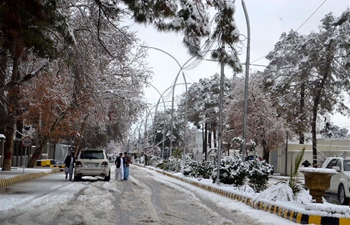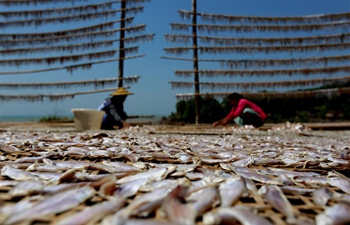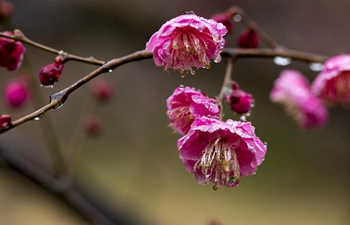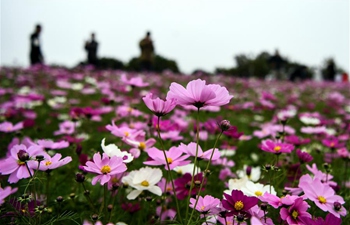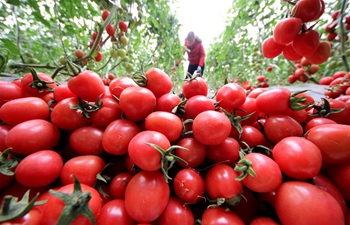KUWAIT CITY, March 3 (Xinhua) -- The desert locust, a traditional Kuwaiti dish that was especially popular in the old days, now seems to be making a comeback in the Gulf country.
At the popular Friday Market in Farwaniya Governorate, Kuwait's main residential area, sacks of the ground-dwelling insects are being purchased by an increasing number of shoppers.
Abu Ali Al-Huraigi, a vendor at the market, said locust is a sustainable alternative source of protein with nutritional benefits that cannot be ignored.
"Locusts are considered highly nutritional. The majority of them are rich in protein, healthy fats, and iron," he said, adding that many Kuwaitis used to eat locusts on a regular basis.
"The sack of locusts is priced at between 5 Kuwaiti dinars (16.5 U.S. dollars) and 10 dinars. Locust season starts from February to the end of April," Al-Huraigi noted.
According to Abdullah Al-Khonaini, a 47-year-old resident, locust swarms are not always bad news in Kuwait where many consider the insect a source of food.
"The Safat Square in the capital city used to be the main station where locusts were sold after they were collected and placed in large bags," Al-Khonaini said.
The locust, known for its nutritional and healthy benefits for the elderly, has about five times more protein than cattle, he added.
When it comes to the way of cooking locusts, Bibi Jafarawi, a Kuwaiti resident, told Xinhua that they can be fried, smoked and dried, or even ground into powder to be added into milk.
"You can dry and keep some to be eaten later after it is seasoned," she said.
According to the local resident Areej Al-Houti, the female locust, which has light brown and white color in her stomach, while the male one is yellow and thinner than the female.
The female locust tastes more delicious because of the eggs in her stomach, Al-Houti said.
"In the old days, our grandfathers ... would dig a big hole in the sandy ground in the desert and bury the locusts in the sand until they were cooked. Then they clean and eat them," she noted.
Maryam Al-Hendi, 25, talked about her first experience of eating locusts.
"My first experience of trying locusts was very interesting. The taste was familiar and reminded me of another type of Kuwaiti food called Nikhi (hot and spicy chickpeas)," she said.
Al-Hendi was influenced by her grandmother who used to eat the locust in her childhood.
"I was curious about the history of the locust and why they first began to eat it," she said.
"I asked my grandmother and she said they'd come in bundles and groups at a time in the desert. Then men used their skills to catch them alive and sell them," the young woman noted.
"It was a very interesting experience," she told Xinhua with a smile.




